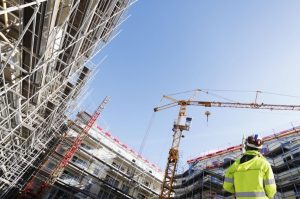Buying and selling development land

As we navigate economic turbulence and climate crisis, the need for more affordable and sustainable housing is growing. In this article Beth Laidler, a Partner in the Real Estate team at Blacks Solicitors, discusses the considerations for a developer when buying and selling development land.
Personnel
The key to any successful project is to partner with experts. Engaging the right people from the outset will ensure that you can navigate:
- finding the right land and investigating its suitability;
- assessing the planning status of the land;
- preparing and submitting a planning application;
- evaluating the legal title to the land and drafting legal documents;
- executing the development works; and
- successfully marketing and selling the individual residential plots.
Planning
Finding a development site in the correct location may be steered by the availability of land, your wants, budgets and the market.
For example, greenfield land will need to be allocated for development, and the necessary infrastructure constructed, which will involve time and money. Brownfield land is more likely to be ready for development.
The requirements of any future s106 Agreement and CIL (Community Infrastructure Levy) must be considered. For example, will planners require open space in the development and/or a contribution to local educational provision?
Biodiversity Net Gain will be a big consideration in the planning process.
Investigating Title
A solicitor’s red flag title report will indicate any encumbrances that will impact the intended development. It will consider restrictive covenants, existing tenancy agreements, rights and reservations over the land, boundaries and any neighbouring ransom strips. It will also consider whether any overage provisions burden the property that will require payment to a third party on implementation of a planning permission.
Infrastructure
It will be prudent to consider if the intended development can be fully supported by existing infrastructure on the development land, or whether access to neighbouring land will be required to either exercise existing rights (for example, rights to lay, connect to and use service media) or to take the benefits of new ones.
Searches
Searches will ascertain whether there are environmental constraints on the development land, for example drainage and flooding issues, the whereabouts of any existing utilities and the adoption status of adjoining access roads.
Contaminated land issues may impact the ability to develop the land if remedial works are required.
Legal agreements
Option agreements and conditional contracts govern the legal relationship between and responsibilities of the developer and land owner.
An option agreement will demonstrate your commitment to a project, whilst only committing you to purchase once you have achieved satisfactory results to your enquiries and investigations and have obtained planning permission. A conditional contract will be more stringent (and therefore more favourable to a land owner) and will bind you into purchasing the development land once all named conditions have been satisfied.
In addition, the landowner may request overage payments to reflect any uplift in the value of the development land when planning is obtained and/or implemented.
Finance
It is important to consider how you will finance the development. Will it be in cash, or a joint venture with a third party? Will you be taking a development loan or bridging finance?
Bear in mind that where you might be willing to take a commercial view on anything revealed by the searches of and enquiries into the development land, a funder may take a more cautious and potentially prohibitive approach.







